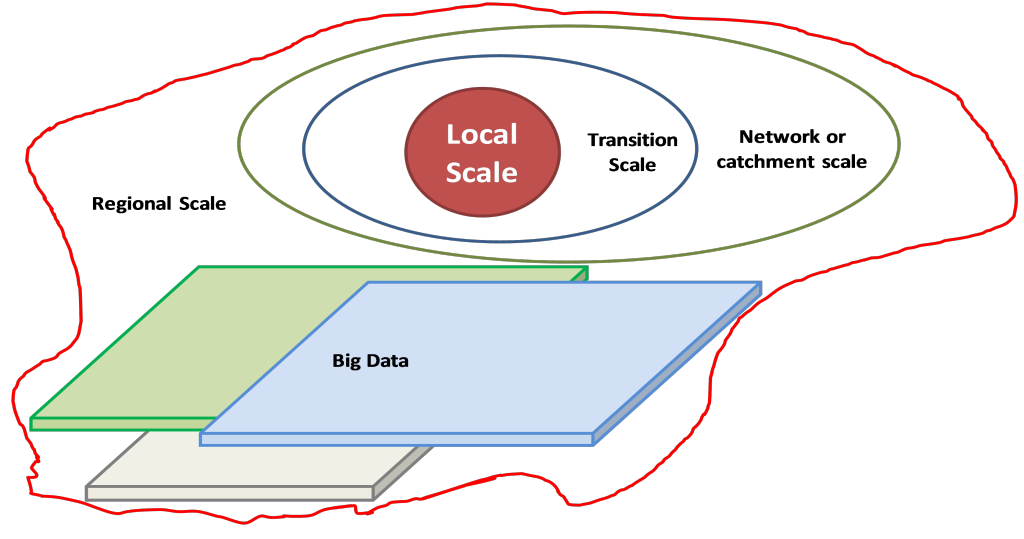The Local Scale processes in the Systems Framework are utilised to capture the distributed local behaviours of people, buildings and land uses that drive the performance of entire system in response to the layers of Big Data inputs (see Figure 1).
Figure 1: Schematic of the Systems Framework with a focus on the Local scale
The local scale includes three dwelling types (detached, semi-detached and units) and five household sizes (1 person to 5+ people). These residential land uses are combined with non-residential land uses including agricultural, commerce, industry, education, medical, forests, irrigated parks and transport.
Inputs to local scale simulations from the Big Data layers include demographic data (such as profiles of dwelling types and household sizes), socio-economic information (including household income, water and energy use, and business statistics), geological data (such as soil types and profiles) and climate data (rainfall, temperature and evaporation).
Local scale continuous simulations for each dwelling type and land use throughout entire the Systems Framework are completed at time steps ranging from one second to six minutes using the longest local sequences of rainfall data.
The local scale simulations include development of behavioural water demands and sewage flows that are calibrated to local observed data. Generated sequences of stormwater runoff are also calibrated to any available local data and energy outputs are also calibrated to available information. This analysis utilises the PURRS model (see the PURRS fact sheet for more detail).
Outputs from the Local Scale analysis include long sequences of water demands, wastewater discharges, stormwater runoff, energy demand, water quality, soil moisture and finances. These results are combined with climate data and passed to the Transition Framework as reference files.

